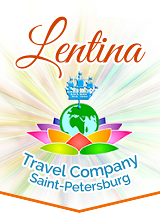
TThe Russian Museum houses one of the biggest collections of Russian art in the world. It numbers about 400.000 items originating from the 12th century up to our time. These are icons, paintings, sculpture, numismatic items, works of graphic and folk arts as well as pieces of decorative and applied arts. They represent all art genres, styles and trends developing in Russia through history. The museum occupies Mikhailovsky (Michael's) Palace, the best example of palace architecture in the final years of the Neo-Classical era. Nicholas II donated the building to the museum in 1895. Sadly, few of the original interiors survived. Most notable is the White Hall, an immaculately finished society sitting-room and the refined former State Bedchamber, now used to display late 18th century portraits.
What you will see at the Russian Museum
The displays in the museum are arranged according to the historical-chronological principle. Only the ethnographical display takes a thematic approach. The display begins with the collection of icons which is one of the largest in Russia. Its more than 5000 items give a full representation of the history of Russian icon-painting in the course of 700 years and includes the masterpieces by Andrei Rublev and the artists of Novgorod school.
The collection of Russian 18th century painting in the Russian Museum is rightly recognized as one of the richest museum collections. It comprises works by practically all known artists of the period from Peter I to Catherine II and Paul I. The display clearly demonstrates how quickly the Russian artistic school went from the first timid attempts to master the European manner of painting in the early 18th century (Matveyev, Nikitin and others) to the highest peaks of creativity at the end of the same century (Levitsky, Borovikovsky and others).
For the number of the world-ranking masters in the 19th century Russia can be compared, probably, only with France. The Russian Museum possesses a number of key masterpieces from this period including Briullov’s Last Day of Pompeii, Aivazovsky’s Ninth Wave and Repin’s Zaporozhye Cossacks. Works by Shishkin, Vasnetsov and Surikov are also worth mentioning.
The Russian Museum is proud with its largest in the world collection of works of Russian art of the late 19th-early 20th centuries. It embraces the most outstanding trends, names and artistic associations. Don’t miss the works by Serov, Vrubel, Roerich, Kandinsky, Malevich and Chagall.
Notes for the visitors of the Russian Museum
Parts of the museum’s collections are on display in the Stroganov and Marble palaces and the Mikhailovsky Castle
Closed: on Tuesday
Duration of a tour: about 3 hours (including the drive there and back to the hotel/cruise port)
Official web site: The Russian Museum
Please contact us if you would like to arrange a tour.

















